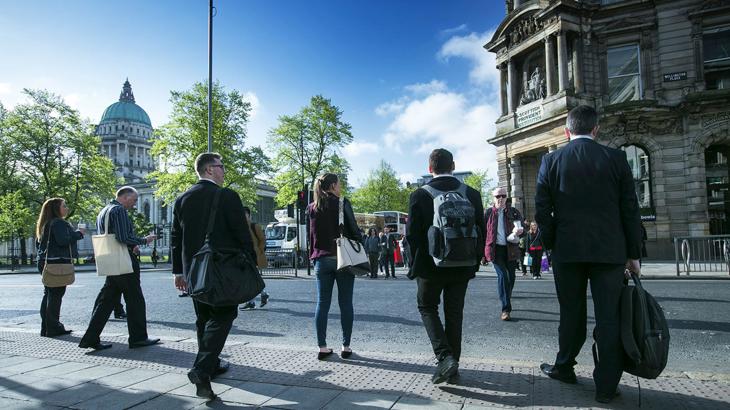Walking and cycling are the most effective ways to promote routine physical activity. In general terms fitter, healthier employees benefit their employer.

The health benefits of active travel
1. How active travel can improve health and wellbeing in the workforce
The costs of absence and presenteeism (working whilst sick which can cause productivity loss, poor health, exhaustion and workplace epidemics) to business, the economy and the employee is too significant to be ignored.
Over the past 60 years, the design of urban environments and transport systems has favoured private motorised transport. Whilst this has bought some benefits, it has also imposed high health and societal costs.
Walking and cycling are the most effective ways to promote routine physical activity. In general terms fitter, healthier employees benefit their employer through:
- Lower turnover rates and reduced absenteeism
- Improved productivity and employee morale
- Lower health care costs
Transport systems and the wider built environment play a crucial role by either promoting or hindering physical activity.
How active travel can improve health and wellbeing in the workforce toolkit contents
- Health benefits of regular physical activity.
- Health costs of physical inactivity for society and employers
- Transport modes, physical activity and health
- Case studies focusing on workplaces and the commuter journey that demonstrates increased physical activity through walking and cycling.
How active travel can improve health and wellbeing in the workforce downloadable resources
How active travel can improve health and wellbeing in the workforce (PDF)
How active travel can improve health and wellbeing in the workforce Slidepack (PDF)
2. Improving air quality by walking and cycling
Air pollution is damaging our environment and our health. Up to 40,000 early deaths are attributable to air pollution each year in the UK and road transport is responsible for 80% of the pollution where legal limits are being broken.
The Avoid (align transport and urban development), Shift (modal shift to active travel and public transport) and Improve (use technology to reduce emissions) approach is a useful framework for reducing air pollution.
Improving air quality by walking and cycling toolkit contents
- The impacts of poor air quality on human health.
- The benefits of modal shift from short car trips to walking and cycling.
- Approaches to improve air quality that encourage modal shift.
Improving air quality by walking and cycling downloadable resources
Improving air quality by walking and cycling (PDF)
Improving air quality by walking and cycling Slidepack (PDF)
3. The role of active travel in improving mental health
Poor mental health is a significant and often poorly understood issue in the UK, with one in six workers experiencing depression, anxiety or problems relating to stress at any one time.
Evidence suggests walking and cycling can contribute positively towards mental health both through physical activity and other factors in comparison to commuting by car.
More needs to be done to improve links between transport, health and wellbeing nationally and locally, including how we account for mental health outcomes in transport planning.
The role of active travel in improving mental health toolkit contents
Financial and personal costs of poor mental health.
- Benefits of physical activity for mental health.
- Benefits of active travel for mental health through the commute.
- Improving links between transport health and wellbeing.
The role of active travel in improving health downloadable resources
The role of active travel in improving mental health (PDF)
The role of active travel in improving mental health Slidepack (PDF)
